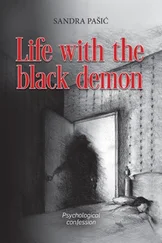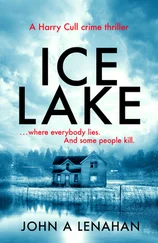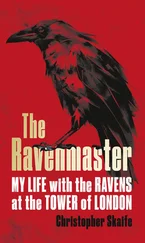Lunch usually lasted about an hour. Then the Führer brought the meal to a close to get ready for his walk. He liked the little tea-house in the grounds better than the actual walk there, which took him only twenty minutes, but if the weather was bad he often preferred to drive in the Volkswagen. The servants and orderlies asked all the guests if they were going for the walk. You didn’t have to, and then you could use the time as you liked. But ladies were always in demand◦– there weren’t so many female guests when we first arrived, and then for form’s sake there must be enough gentlemen to make up a well-balanced party. Reichsleiter Bormann almost always pleaded pressure of work. For a compulsive worker like him these hours of private relaxation, when he couldn’t talk business, were a waste of time.
Eva Braun, however, loved athletic pursuits and walking. She would get her outdoor clothes on immediately after lunch, take her two dogs and her friend Herta, and go a long way round on foot all through the grounds, joining the company at the coffee table later.
The Führer would put on his soft peaked cap◦– the only item of headgear that he didn’t place upright on his head like a saucepan◦– with either a long black rain cape or a trench-coat over his uniform. Then he took his walking-stick and the dog’s leash and set off along the path with one of the men. The rest of the party followed informally. Usually the Führer walked so slowly that some of those following caught up with him. Poor Blondi had to stay on her leash, because the grounds here were a paradise for game. The deer, rabbits and squirrels were very tame. They grazed in the meadows and took hardly any notice of passers-by. It seemed they had discovered that no shot would disturb their peace here, and that humans protected them and would put out food for them in winter. Eva Braun’s black terriers sometimes raced through the tall grass on the hillsides yapping, and the deer grazing there would look at them pityingly and leap aside only when the dogs chasing them came very close.
The tea-house lay on a little plateau of rock falling steeply away on the north side. It was a natural look-out tower. Deep below, the river Ach flowed in many winding curves, and the houses on its banks looked like little matchboxes. There was also a view from here between the mountains all the way to Salzburg, blocked only on the left-hand side by the Steinernes Meer, the ‘Stone Sea’. But that mighty colossus of rock was worth seeing for its own sake. In fine weather those to arrive first waited outside on a wooden bench until the whole party had assembled.
Usually Eva Braun brought her camera or cine-camera and tried to get the Führer in front of her lens. Admittedly she was the only person who could photograph him whenever she liked, but it was very difficult to get a good snapshot of him. He liked photos to be taken without any fuss or bother. But in fine weather, when the sun was shining, he always had his cap on, so that his face was in shadow, and he couldn’t be induced to take it off because bright light dazzled him. He might even be wearing sunglasses. However, Eva put so much cunning and patience into her passion for photography that she often got good shots – better photos, in fact, than those taken by her former teacher and employer Heinrich Hoffmann. [38] Heinrich Hoffmann, b Fürth 12 September 1885, d Munich 16 December 1957; works in his father’s photography business; 1908 sets up independently in Munich; 1920 joins the NSDAP, membership number 425; 1933 becomes a member of the German Reichstag; 1938 given the title of Professor by Hitler; 1945 interned by the US Army, released May 1950.
The tea-house was a round, stone building and looked ugly from the outside, rather like a silo or an electricity station. Inside, apart from the kitchen, a guardroom and the necessary anteroom and adjoining small offices, there was just one large, round room that you could enter either direct from outside or through a pretty entrance hall leading there from the kitchen quarters. There were some comfortable armchairs with flowered upholstery in this entrance hall, and little tables. A telephone stood here too.
This big, round room was an architectural masterpiece. The ceiling was slightly vaulted, the walls were made of marble picked out in gilt contrasts. Half of the wall had six large windows with a view of the beautiful landscape. On the western side of the room lay the big, open hearth and the entrance door. A huge, low, round table filled the middle of the room. Around it were about twenty deep armchairs, upholstered in alternating beige and terracotta. On the hearth side of the room were four very large chairs with high backs for the Führer and his guests of honour. The staff would have been told in advance of the Führer’s arrival, and the aroma of coffee already filled the house. The table was laid, and coffee was served as soon as we came in. Hitler would seat himself in his armchair right in front of the hearth, with Eva Braun to his left. There was no strict seating plan here either, and Hitler might invite Frau Schneider to sit on his right. The others spread out as they liked around the table. Usually there were several empty places.
Most of us enjoyed a cup of coffee after our walk. Some people drank black tea. Hitler himself would have apple-peel tea or sometimes caraway tea, never anything else. He ate freshly baked apple cake with it, and perhaps a couple of biscuits. The rest of us were given pastries bought in Berchtesgaden, and some of them could be stale and hard to chew.
It was difficult to get a general conversation going here. Every discussion had to be either conducted loud enough for everyone to hear it, or be between groups or couples, leaving silence on the other side of the table.
Eva Braun would try to strike up some interesting, relaxing subject. She talked about the cinema and the theatre, and sometimes tried to persuade Hitler to watch some particularly good movie. ‘You see, you can have it screened in the hall so easily, and this film is art too, it’s not light, it’s a very serious film. I mean, you listen to gramophone records, and I’m sure the German people would have no objection if their Führer saw a movie for once. In fact I’m sure the people would like your colleagues to go to the movies more instead of driving around in big, important-looking cars getting drunk.’ Hitler would always reply, ‘I can’t watch films while the war is on, when the people have to make so many sacrifices and I must make such grave decisions. And I must save my sensitive eyes for reading maps and reports from the front.’
Resigned, Eva would drop the subject, suddenly saying that she had seen some lovely rugs here in the entrance hall, beautiful Scottish tartan, you could make a wonderful lady’s coat out of them, and her dressmaker had a particularly nice pattern for a coat like that. ‘The rugs belong to Bormann, they’re not mine to dispose of,’ was Hitler’s evasive answer. Bormann was all-powerful here on the Obersalzberg, like a version of Rübezahl the wicked mountain spirit. He was administrator of the Platterhof and all the grounds around the Berghof, and was responsible for all technical arrangements, for the construction work now going on and the air-raid shelters. He had a model farm near the Berghof, where he bred pigs and horses, with a huge nursery garden and an apple-juice factory. But although he could be very jovial and good-humoured he wasn’t popular here either. People feared him. Eva Braun never got the rugs for her coat.
Hitler used to say he slept very badly, and if everything wasn’t perfectly quiet he couldn’t sleep at all. But no sooner had the last piece of cake been eaten and the last cup of tea drunk than he would become monosyllabic, close his eyes◦– he said the reflections from the window panes dazzled him◦– and usually he soon dropped gently off to sleep.
Читать дальше
![Traudl Junge Hitler's Last Secretary: A Firsthand Account of Life with Hitler [aka Until the Final Hour] обложка книги](/books/416681/traudl-junge-hitler-s-last-secretary-a-firsthand-cover.webp)

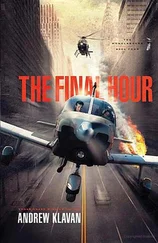
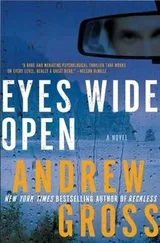
![Джонатан Димблби - Barbarossa - How Hitler Lost the War [calibre]](/books/385421/dzhonatan-dimblbi-barbarossa-how-hitler-lost-the-w-thumb.webp)


